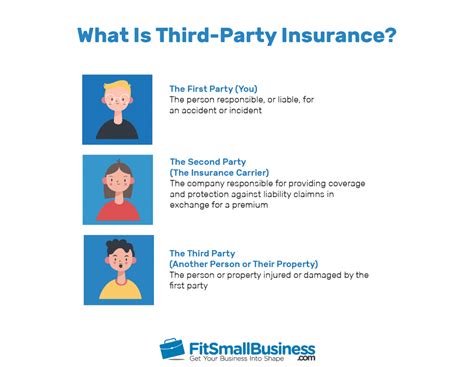Discover the benefits, drawbacks, and tips for maximizing single-premium life insurance policies. Choose the best plan for your financial goals.
Understanding Single-Premium Policies
Contents
When it comes to life insurance, there are various payment options to choose from, with one of the options being a single-premium policy. This type of policy allows the policyholder to make a one-time, lump-sum payment in exchange for a guaranteed death benefit. With a single-premium policy, the policyholder doesn’t have to worry about making monthly or annual payments, as the entire premium is paid upfront.
In essence, single-premium life insurance is a way to secure financial protection for your loved ones without the hassle of ongoing premium payments. The policy provides a sense of security and peace of mind, knowing that your beneficiaries will receive a lump sum upon your passing.
One of the key benefits of a single-premium policy is the potential for cash value growth. Because the entire premium is paid upfront, the policy has the potential to accumulate cash value at a faster rate compared to traditional policies. This means that the policyholder may have access to funds through policy loans or withdrawals if needed.
However, it’s important to note that single-premium policies may not be suitable for everyone. The large, one-time payment required to secure the policy may be a financial burden for some individuals. Additionally, there may be implications for taxes and other financial considerations that should be carefully considered before opting for a single-premium policy.
Benefits of Single-Premium Life Insurance
Single-premium life insurance offers several benefits that make it an attractive option for some individuals. One of the main advantages is the ability to make a one-time, lump-sum payment and then not have to worry about monthly or annual premiums. This can provide peace of mind and financial security, knowing that the policy is fully paid for.
Another benefit of single-premium life insurance is the potential for cash value growth. Because the policy is fully funded from the start, the cash value component can begin to grow immediately. This can be a valuable asset that can be accessed in the future for various financial needs, such as supplementing retirement income or covering unexpected expenses.
Additionally, single-premium policies can offer tax advantages. The death benefit is typically received income tax-free by the beneficiary, and the cash value growth can grow tax-deferred. For those looking for long-term financial planning, the tax benefits of single-premium life insurance can be very appealing.
Furthermore, single-premium life insurance can provide estate planning benefits. For individuals with substantial assets, the death benefit can help cover estate taxes, ensuring that loved ones are not burdened with a significant tax bill upon the insured’s passing. This can be an important part of a comprehensive estate plan.
Overall, single-premium life insurance can be a valuable financial tool for those looking for a simple, fully-funded life insurance option with the potential for cash value growth, tax advantages, and estate planning benefits.
Drawbacks of Single-Premium Policies
One of the major drawbacks of single-premium life insurance policies is the high upfront cost. When you opt for a single-premium policy, you are required to make a lump sum payment of the entire premium amount at once. This can be a significant financial burden for many individuals, especially those with limited cash flow or other financial obligations.
Another drawback of single-premium policies is the potential loss of liquidity. Once you invest a large sum of money into a single-premium policy, it becomes tied up and inaccessible for other financial needs or emergencies. This lack of liquidity can be a downside for individuals who may need access to their funds in the short term.
Additionally, single-premium policies may not be suitable for individuals who are looking for flexibility in their life insurance coverage. Unlike traditional policies that allow for monthly or annual premium payments, single-premium policies lock you into a single, large payment with no option to adjust your premium payments based on your changing financial situation or insurance needs.
Finally, single-premium policies may not offer the same level of potential investment growth or return as other investment options. Because the entire premium amount is paid upfront, there may be limited opportunities for the policy’s cash value to grow over time, potentially resulting in lower returns compared to other investment vehicles.
Choosing the Best Single-Premium Plan
When it comes to single-premium life insurance, there are various options available in the market. It is essential to carefully consider your financial situation and future goals before choosing the best plan for your needs. One of the key factors to consider when selecting a single-premium plan is the coverage amount. You need to assess how much coverage you require to protect your loved ones in the event of your passing.
Another important aspect to consider is the insurance provider offering the single-premium plan. It is crucial to research and compare different insurance companies to ensure you are choosing a reputable and financially stable provider. This will give you peace of mind knowing that your policy will be honored when the time comes.
In addition to the coverage amount and provider, it’s also important to consider the policy features and any additional benefits included in the single-premium plan. Some policies may offer riders such as critical illness coverage or accidental death benefits, which can provide additional protection for you and your family.
Furthermore, it’s essential to review the terms and conditions of the single-premium plan before making your decision. Pay attention to details such as the surrender value, flexibility in premium payments, and potential tax benefits. Understanding these terms will ensure that you are fully aware of the benefits and limitations of the plan.
Ultimately, choosing the best single-premium plan requires careful consideration of your individual needs and circumstances. By evaluating the coverage amount, insurance provider, policy features, and terms and conditions, you can make an informed decision that provides the financial security you desire for yourself and your loved ones.
Maximizing Your Single-Premium Policy
Maximizing Your Single-Premium Policy
When you invest in a single-premium life insurance policy, there are several ways you can maximize its benefits. One way to do this is by choosing the right policy that aligns with your financial goals and risk tolerance. It’s important to consider whether you want a policy that provides a guaranteed death benefit or one that offers the potential for cash value accumulation.
Another way to maximize your single-premium policy is by ensuring that you fully understand the terms and conditions of the policy. This includes knowing how the interest is credited, what fees are associated with the policy, and any potential tax implications. By having a clear understanding of these factors, you can make informed decisions about how to best utilize your policy.
Furthermore, you can maximize your single-premium policy by considering the potential for tax-deferred growth. With a single-premium policy, your initial investment is allowed to grow without being taxed until you make a withdrawal. This tax-deferred growth can provide you with the potential for greater long-term gains compared to taxable investments.
Finally, a key way to maximize your single-premium policy is by regularly reviewing and adjusting your policy as needed. As your financial situation and goals evolve, it’s important to ensure that your policy continues to align with your needs. This may involve making changes to the death benefit amount, updating your beneficiaries, or considering additional riders or enhancements to the policy.












